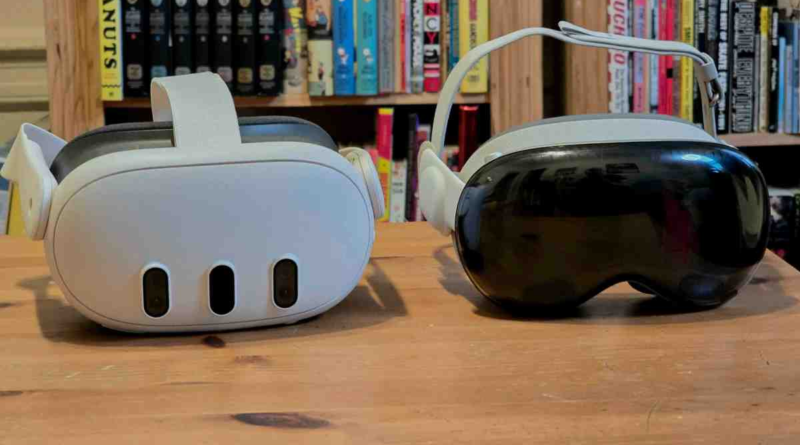VR sickness happens. Here’s how to avoid and treat it.
Over the past week, a number of people have reported returning their Vision Pros for a number of reasons, including issues around headset comfort and sickness. Returns are par for the course with any nascent technology. No matter how polished a first-generation product is upon release, there’s a very real sense in which it serves as a large-scale public beta.
There’s a big difference between testing a product with dozens or hundreds of people and actually releasing that product out into the world for anyone to use. All product testing has its blind spots, but if you’re lucky, those examples are limited to a few outliers. Motion sickness, however, is decidedly not an edge case among the population.
According to studies, around one-quarter of people suffer from the condition. It can cause nausea, headaches, dizziness, fatigue and vomiting. If you’re lucky enough to have never dealt with it, just believe me when I say it sucks. A lot. There’s good reason tens of millions of over-the-counter motion sickness product units are sold in the U.S. each year.
Everyone is, no doubt, familiar with the condition as it pertains to car rides, boat trips and especially eventful flights (the bag in your seatback pocket isn’t for storing peanuts). Extended reality motion sickness is a far lesser-known phenomenon, owing to the low penetrations of augmented reality, virtual reality and mixed reality headsets. It is, however, a very real thing — and certainly not one endemic to Apple’s first headset.
Meta Quest, HTC Vive and PSVR users have all reported experiencing it. Reports of people returning the hot new tech products within weeks of purchase will always raise some eyebrows. That’s especially the case when you’re Apple releasing a device that was in the works for the better part of a decade, with a $3,500 asking price.
The company certainly was mindful about motion sickness during the R&D phase. Reducing latency and bumping up display resolution go a ways toward reducing its potentiality. But if a method exists to avoid all motion sickness in all users, no one’s found it just yet.
“With the emergence of new VR technologies, high-quality stereoscopic [head-mounted displays] are now capable of simulating the visual and spatial properties of the real-world,” notes a 2020 paper on the subject. “Despite improvements, current technology still falls short of replicating how humans see and perceive depth under natural viewing conditions. There are software solutions that can help to reduce discomfort by introducing blurring during motion, however, this technique may not be effective for everyone.”
The underlying cause is the same with all of these examples. Motion sickness is triggered when your brain receives disjointed information from your eyes, body and inner ear. These different senses are processing the current moment differently. It’s easy to imagine how using a headset effectively designed to trick your brain’s perception of reality might trigger these symptoms.
Apple was smart enough to know that this would present itself in a certain portion of Vision Pro users, and given how many of us are prone to motion sickness in some form, in all likelihood a significant number of people would experience some symptoms. Ahead of the Vision Pro’s release, Apple issued guidelines designed to minimize and address potential motion sickness.
Before we get into the specifics of Apple’s guidelines, allow me to state an obvious fact: The best way to avoid VR sickness is to avoid VR. Speaking from firsthand experiences, the second best is to limit your usage. If you’re prone to motion sickness (as I am), don’t expect to make the full-time jump into the infinite desktop any time soon. I tend to keep my sessions between 20-30 minutes. That’s enough time to do many of the things you’d want to do with the headset, but it’s far from actually living in the thing. I’ve also found that I’m far less likely to experience it while sitting.
I didn’t experience motion sickness in my early Vision Pro demos. It was only once I got it home and started to engage in activities that required me to stand up and walk around that I was hit with a wall of nausea. I overdid it and opted not to wear the headset for the rest of the day.
Apple similarly advises against wearing the headset for long stretches and moving around too much, if you’re prone to motion sickness. You also might want to think twice about wearing the headset on a plane for this reason. Apple also suggests reducing “visual motion.” The company writes:
Visual motion can come from apps in which you appear to be moving, or from the motion of objects or content within the app. To reduce visual motion:
Decrease the size of the window, or increase the distance to the window.
Reduce the level of immersion by turning the Digital Crown. This helps provide a sense of stability by allowing you to see more of the space around you.
Turn on the Reduce Motion setting on your device: Go to Settings > Accessibility > Motion, then select Reduce Motion.
One more seemingly obvious bit of advice before I leave you: Try it before you buy it. Go into an Apple Store, borrow a friend’s — get your hands on it first, before plunking down such a sizeable sum. You might be among the lucky folks who never experience any sort of discomfort from these products. God bless you and see you in whatever the hell we’re calling the metaverse now.
If, however, you’re like me and are prone to getting sick on boats and in the backseat of Ubers, proceed with caution. Even the best VR experience can be miserable if your brain and body disagree on the basics of reality.




